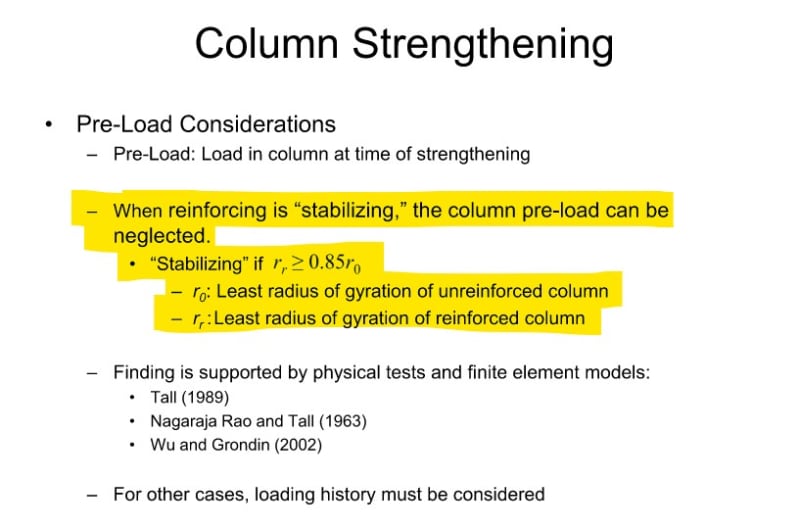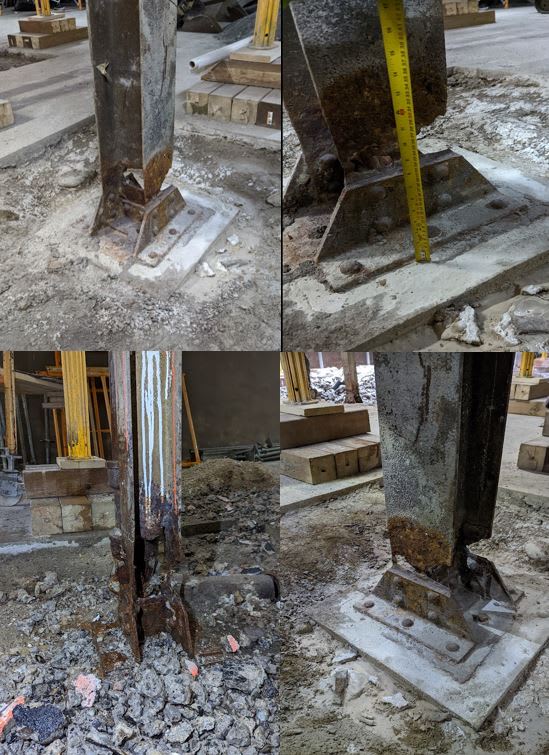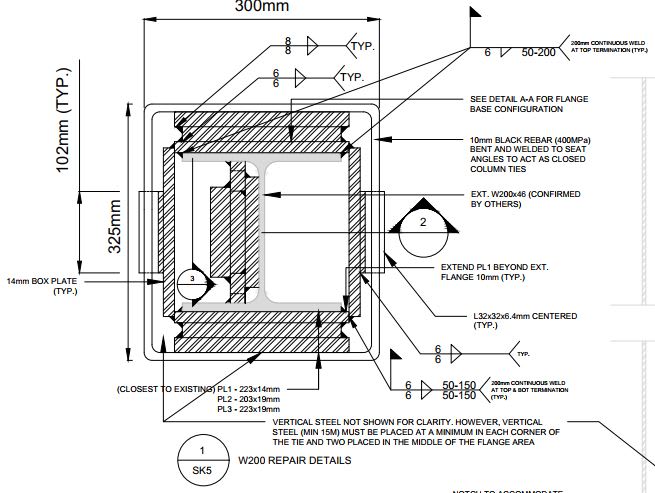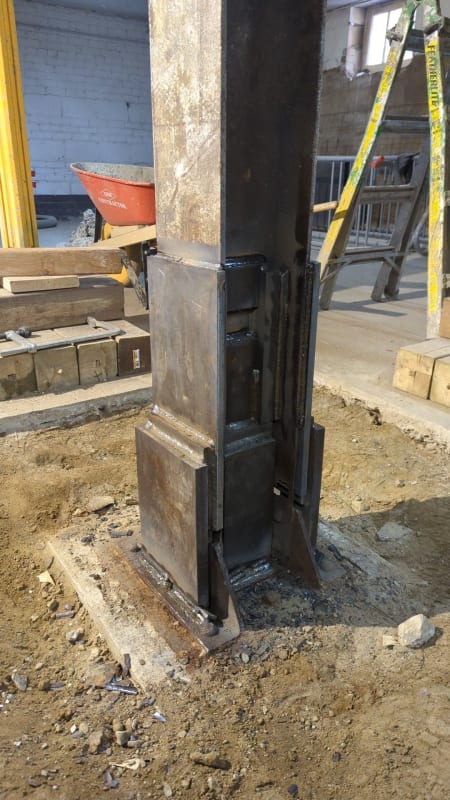Eng_Struct
Structural
- Sep 23, 2022
- 56
Hi All,
I have an existing 9.7m tall column that is HSS 300 x 300 x 6.4. Due to the additional weight added, I am finding my column to be overstressed by roughly 20%. The column is failing due to flexural buckling. I will need to provide reinforcing plates on all four sides to increase the radius of the gyration to increase the section capacity.
However, I am wondering if I need to reinforce the column for the full height. Can I not just provide additional reinforcing midway (i.e, reinforce only 4.850m from the ground) to reduce the unbraced length. Analyze the top section based on the 4.850m section for the flexural buckling and check the bottom section with reinforced section properties. Note that the load to the column will be coming form the very top.
Any watch-its or things to be concerned about for the above-mentioned reinforcing stratergy? Also, what do I need to consider for the weld design and spacing for the reinforcement?
Thanks!
I have an existing 9.7m tall column that is HSS 300 x 300 x 6.4. Due to the additional weight added, I am finding my column to be overstressed by roughly 20%. The column is failing due to flexural buckling. I will need to provide reinforcing plates on all four sides to increase the radius of the gyration to increase the section capacity.
However, I am wondering if I need to reinforce the column for the full height. Can I not just provide additional reinforcing midway (i.e, reinforce only 4.850m from the ground) to reduce the unbraced length. Analyze the top section based on the 4.850m section for the flexural buckling and check the bottom section with reinforced section properties. Note that the load to the column will be coming form the very top.
Any watch-its or things to be concerned about for the above-mentioned reinforcing stratergy? Also, what do I need to consider for the weld design and spacing for the reinforcement?
Thanks!





